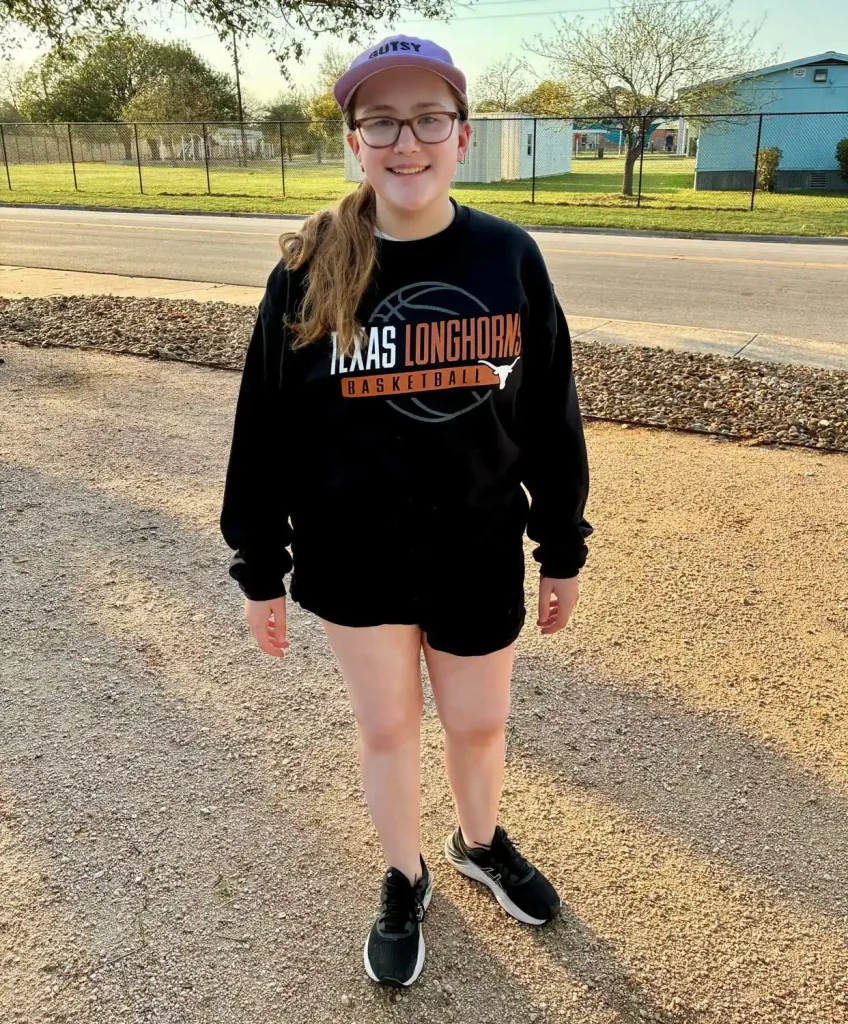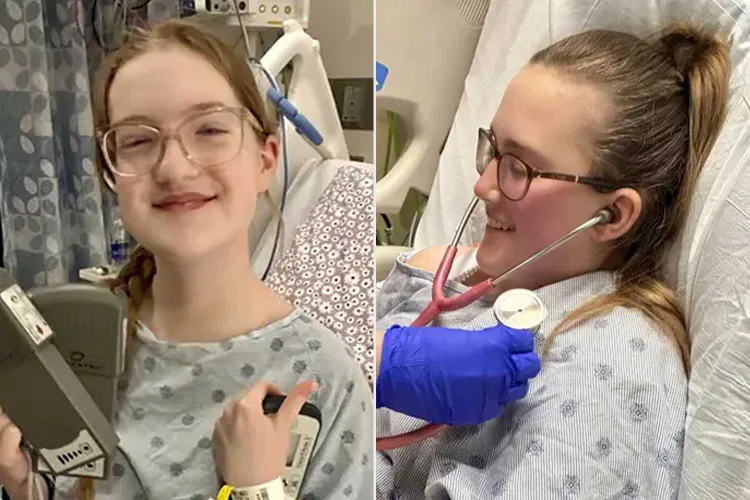San Antonio Sisters Harper and Heidi Gaffney Were Both Born with Heart Disease — and After Waiting a Year, They Got New Hearts Just Six Weeks Apart
Two Texas sisters, Harper and Heidi Gaffney, share a bond that goes far beyond sisterhood — they share a story of survival. Born with the same rare heart condition, dilated cardiomyopathy, the San Antonio teens underwent heart transplants just six weeks apart. Their story is one of faith, resilience, and the incredible strength of family.

The Gaffney family always knew that heart health was part of their story. Their mother, Ashley Gaffney, also lives with dilated cardiomyopathy, a disease that weakens the heart muscle and affects its ability to pump blood. For years, she managed her condition through careful monitoring and medication. But when her daughters, Heidi and Harper, began showing symptoms as they entered their teenage years, it became clear their journeys would take a different turn.
Heidi, now 18, was diagnosed as a baby. Harper, now 15, was tested soon after and found to have the same condition. For years, both girls appeared healthy — they went to school, had friends, and lived as normal teens. But in their early teens, their symptoms grew more severe. They began feeling constant fatigue, shortness of breath, and occasional fainting spells. For Ashley, watching both daughters’ health decline felt like reliving her own fears twice over.
After several hospitalizations and a growing sense of urgency, doctors determined that both sisters would need heart transplants. Each girl was placed on the transplant list in 2024. The waiting game was excruciating. “We knew it could take months, even years,” Ashley told People. “But we prayed every day that they would both get the chance to live full lives.”
That chance came — first for Harper. After months of waiting, Harper’s condition worsened. She began vomiting regularly and her organs started to shut down. She was admitted to the Texas Center for Pediatric and Congenital Heart Disease in Austin, where doctors determined she needed an LVAD, a mechanical pump that keeps blood circulating in patients awaiting a donor heart. The device kept her alive long enough for a miracle — in April 2025, she received the call that a heart was available.

The 12-hour operation was long and delicate, but Harper pulled through. Her doctors called it a “perfect match.” As Harper began her recovery, her family’s relief was overwhelming — but they didn’t know their journey was only half complete.
Just six weeks later, another phone call came. This time, it was for Heidi. She, too, had been living with an LVAD and waiting for the right donor. When the match arrived, Ashley said it felt surreal. “I couldn’t believe it was happening again — two miracles, six weeks apart,” she said.
Both surgeries were performed by Dr. Charles Fraser Jr. and his team, who later said it was one of the rarest coincidences he’d seen in decades of pediatric surgery. “Two siblings, both with congenital heart failure, both receiving transplants within weeks — it’s extraordinarily rare,” he told People. “And what’s more powerful is how they’ve helped each other through recovery.”
The sisters spent the next several months healing side by side, each serving as the other’s emotional anchor. For Harper, seeing Heidi go through the same process gave her strength. “We just got each other,” she said. “There were days we didn’t even have to talk — just being together was enough.” Heidi added that watching Harper recover first helped her believe she could too. “She gave me hope when I was scared,” she said.

Their hospital room became a place of laughter, music, and shared gratitude. Nurses often stopped by just to see the two smiling sisters, sometimes joking that they were “the happiest heart patients in the ward.” Between medical checkups and rehab sessions, the girls played games, listened to Taylor Swift, and even decorated their hospital beds with photos of family and friends.
Their mother says their bond was the key to their healing. “They pushed each other to stay positive,” Ashley said. “They’ve been through so much, but they never let go of joy.”
Even while waiting for their transplants, the girls tried to live as normally as possible. Last year, they attended a Taylor Swift concert in New Orleans with their LVADs in tow — each carrying extra batteries and pumps under their dresses. “They danced the whole night,” Ashley recalled with a smile. “It was something I’ll never forget. They just wanted to feel alive.”

Both Harper and Heidi have now returned home to San Antonio, where they continue recovery with regular hospital checkups and strict medication schedules. Life after a heart transplant is complex — patients must take lifelong anti-rejection medications and monitor their health closely. But to the Gaffneys, each day feels like a gift.
Harper, once limited by exhaustion, now dreams of playing basketball again. Heidi, inspired by her medical team, wants to become a nurse specializing in pediatric cardiology. “I know what it feels like to be in that bed,” she said. “I want to help other kids who are scared like I was.”
Both sisters have also developed a deep appreciation for their donor families — the strangers whose losses gave them life. “We think about them every single day,” Heidi said. “Our hearts beat because someone chose to give us theirs. That’s something we’ll never take for granted.”

The Gaffney family hopes their story encourages more people to become organ donors. “There are so many families like ours waiting for that call,” Ashley said. “You can save lives — not just one, but entire families.”
As they continue their recovery, Harper and Heidi remain inseparable. They attend follow-up appointments together, compare medication notes, and celebrate every small victory — from walking longer distances to taking deep breaths without strain. “We’ve learned to appreciate every heartbeat,” Harper said softly. “Every single one.”
Their journey is far from over, but their gratitude is limitless. Two hearts, two second chances, one unbreakable sisterly bond. “We’re not just sisters anymore,” Heidi said. “We’re survivors — together.”


